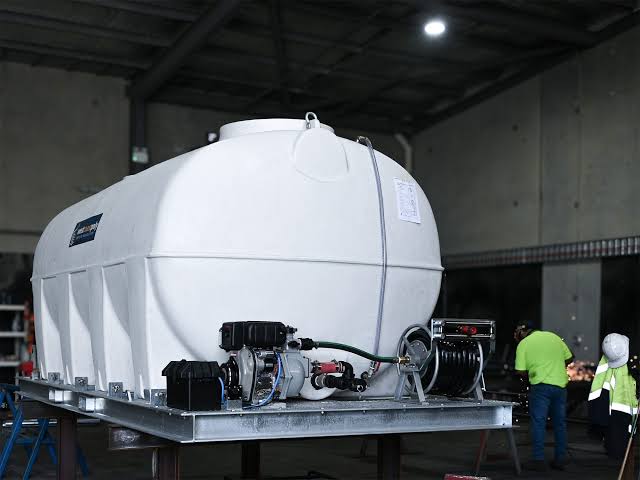Water needs to be moved occasionally since it is necessary for life to exist. Transportable water tanks are useful in this situation. Water may be easily moved to any desired location with the help of these adaptable containers. Knowing about transportable water tanks may be quite helpful if you’re a farmer, construction worker, or just someone who wants to be ready for anything. Let’s explore the five essential aspects of these useful transportable water tanks for easy water cartage.
- The Benefits of Transportable Water Tanks
In terms of transferring water, transportable water tanks are quite convenient. These tanks are ideal for a variety of applications since they can be effortlessly placed into trucks or trailers. They’re perfect for meeting agricultural demands in places with little access to water sources, distributing water to distant work locations, and temporarily storing water during emergencies. These tanks are a useful tool in many circumstances when the transportation of water is required because of their adaptability and mobility.
- Different Types of Transportable Water Tanks
Not every portable water tank is made equally. There are several varieties that are appropriate for various purposes. Sturdy and long-lasting, rigid tanks are ideal for frequent usage. Conversely, collapsible tanks may be folded up when not in use to save room when being transported or stored. Because they are pliable, bladder tanks can take on the shape of the vehicle that is transporting them. While some tanks are better suited for non-potable water used in construction or agriculture, others are made expressly for drinking water.
- Choosing the Right Size for Your Needs
Size counts when it comes to transportable water tanks. The appropriate size is determined by your unique needs as well as the transport vehicle’s capacity. Tanks come in a variety of sizes, from little 100-liter containers to enormous 10,000-liter monsters. It’s crucial to take into account not only the volume of water you need to move, but also the weight of the filled tank as well as whether your automobile can handle it securely. Keep in mind that water is heavy; a full 1000-liter tank can add a ton of weight to your cargo (one liter equals one kilogram).
- Material Matters: What Your Tank is made of
Your transportable water tank’s material greatly affects its weight, and longevity, along with appropriateness for various types of water. Tanks made of polyethylene are widely used because they are corrosion-resistant as well as lightweight. Though heavier, stainless steel tanks are long-lasting and perfect for frequent usage. Tanks made of fiberglass provide a suitable mix of weight and strength. Certain tanks are acceptable to convey drinking water because they are constructed from materials that are suitable for food use. The material selection is a crucial consideration since it might impact the tank’s longevity.
- Maintenance and Care for Longevity
Carrying water tanks that are portable has to be well maintained in order for it to last a long time alongside function properly. Cleaning must be done on a regular basis, particularly if drinking water is being used from the tank. To stop leaks, it’s critical to inspect for damage or cracks before each usage. Make sure the tank is entirely dry before storing it for a lengthy amount of time to avoid the formation of mold. Appropriate folding in addition to storage methods for collapsible tanks can shield the material from deterioration. A high-quality transportable water tank should last you many years with proper care.
Conclusion
For anyone who has to carry water from one location to another, transportable water tanks are an essential tool. They are available in many sizes as well as varieties, each with special benefits. The tank’s material composition is a major factor in determining how long-lasting and versatile it is. To make sure your tank continues to function efficiently for a long period, proper maintenance is essential.





